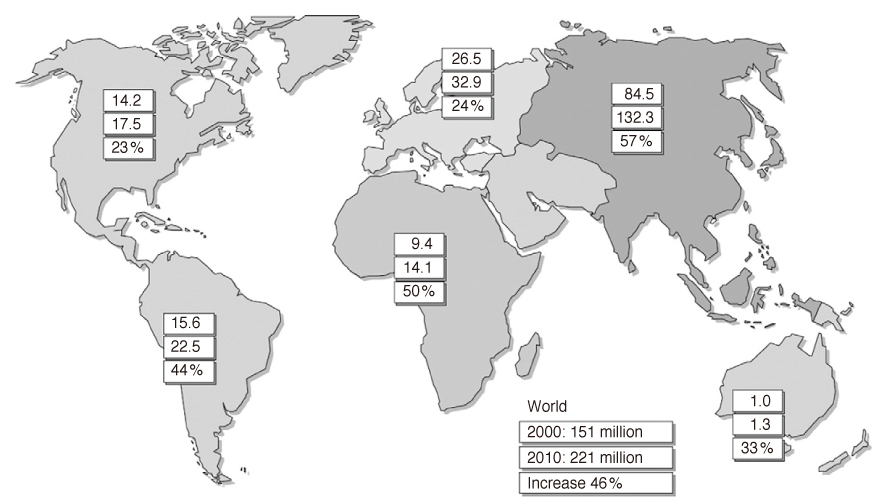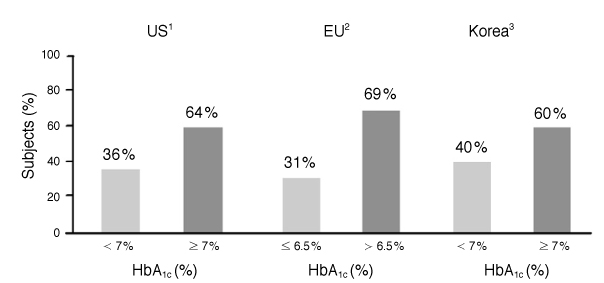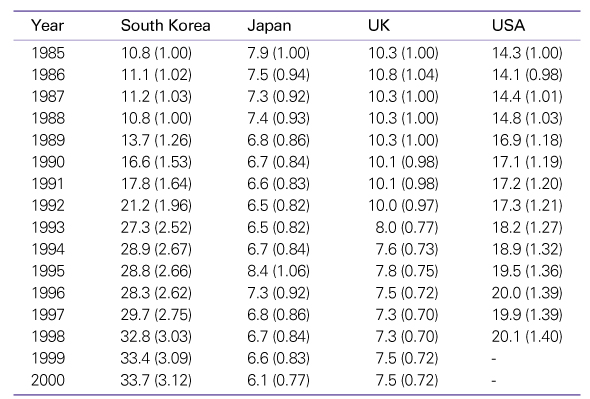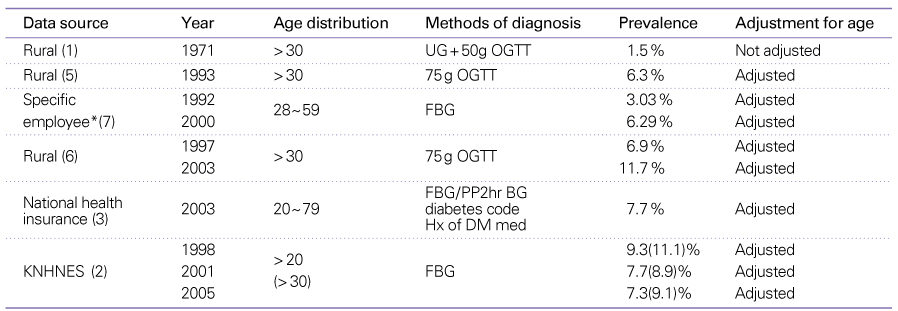1. Kim KS, Choi CH, Lee DY, Kim EJ. Epidermiological study on diabetes mellitus among rural Korean. J Korean Diabetes Assoc 1972;1:17-24.
2. Kim DJ, Park HM. Korean National Health and Nutrition Examination Survey - the 3rd Report (2005) 2007;asessed on July 12, 2008. The Korea Centers for Disease Control and Prevention. 131-166.
http://knhanes.cdc.go.kr/result/Result_03.aspx/
3. Korean Diabetes Association Task Force Team for Basic Statistical Study of Korean Diabetes Mellitus: Diabetes in Korea 2007.
4. Death rate for the 10 leading causes of death 2006;asessed on July 12, 2008. Korea National Statistical Office.
http://www.nso.go.kr/
5. Park Y, Lee H, Koh CS, Min H, Yoo K, Kim Y, Shin Y. Prevalence of diabetes and IGT in Yonchon County, South Korea. Diabetes Care 1995;18:545-548.
6. Song KH, Nam-Goomg IS, Han SM, Kim MS, Lee EJ, Lee YS, Lee MS, Yoon S, Lee KU, Park JY. Change in prevalence and 6-year incidence of diabetes and impaired fasting glucose in Korean subjects living in a rural area. Diabetes Res Clin Pract 2007;78:378-384.
7. Kwon JW, Song YM, Park H, Sung J, Kim H, Cho SI. Effects of age, time period, and birth cohort on the prevalence of diabetes and obesity in Korean men. Diabetes Care 2008;31:255-260.
8. International Diabetes Federation. Diabetes Atlas, 2nd ed 2003;accessed on July 12, 2008. Available at:
www.eatlas.idf.org
9. Zimmet P, Alberti KG, Shaw J. Global and societal implications of the diabetes epidemic. Nature 2001;13:782-787.
10. Yoon KH, Lee JH, Kim JW, Cho JH, Choi YH, Ko SH, Zimmet P, Son HY. Epidemic obesity and type 2 diabetes in Asia. Lancet 2006;11:1681-1688.
11. Gregg EW, Cadwell BL, Cheng YJ, Cowie CC, Williams DE, Geiss L, Engelgau MM, Vinicor F. Trends in the prevalence and ratio of diagnosed to undiagnosed diabetes according to obesity levels in the U.S. Diabetes Care 2004;27:2806-2812.
12. Choi YJ, Cho YM, Park CK, Jang HC, Park KS, Kim SY, Lee HK. Rapidly increasing diabetes-related mortality with socio-environmental changes in South Korea during the last two decades. Diabetes Res Clin Pract 2006;74:295-300.
13. Nathan DM, Buse JB, Davidson MB, Heine RJ, Holman RR, Sherwin R, Zinman B. Management of hyperglycemia in type 2 diabetes: A consensus algorithm for the initiation and adjustment of therapy: a consensus statement from the American Diabetes Association and the European Association for the Study of Diabetes. Diabetes Care 2006;29:1963-1972.
14. Kim DJ, Kim HM, Park SW, Kim HC, Kim HJ, Lee KW. Trends in the prevalence and management status of diabetes in Korea: Korean National Health and Nutrition Examination Survey. Diabetes Res Clin Pract 2008;79:S. 21.













